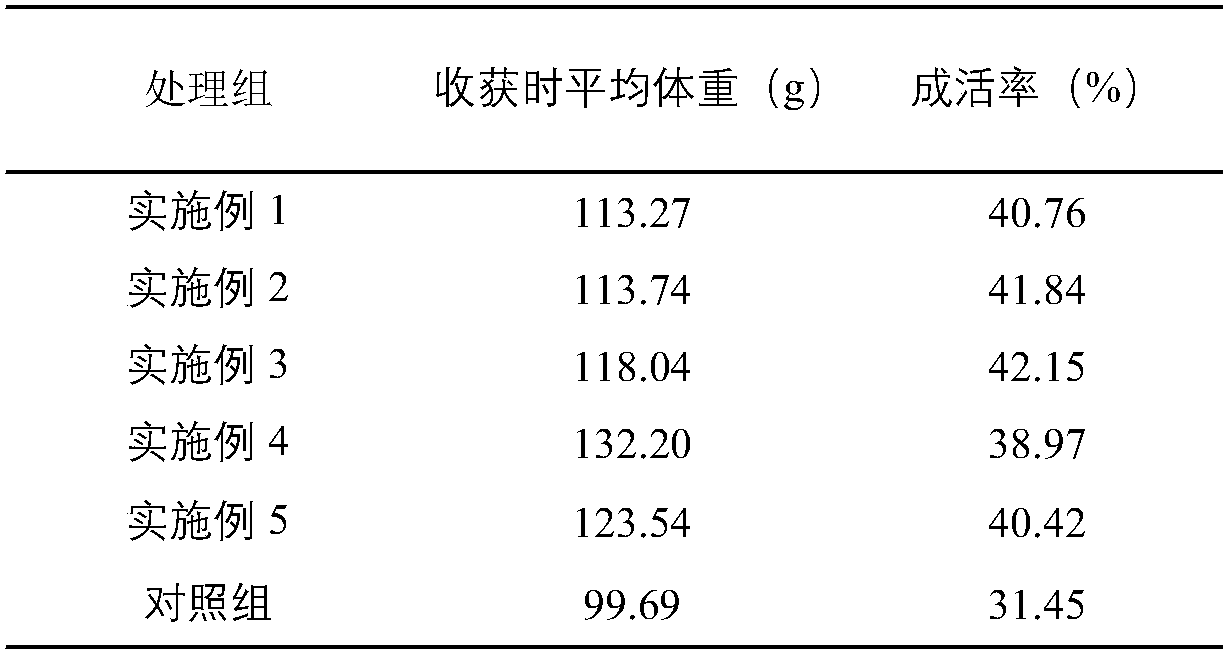Efficient and pollution-free river crab rice field breeding method
A breeding method and technology of river crabs, applied in botany equipment and methods, fish farming, rice cultivation, etc., can solve the problems of unfavorable ecological environment sustainable development, damage of surrounding water ecological environment, decrease of dissolved oxygen in water, etc., and achieve improvement Effects of water environment, inhibition of harmful microorganisms, and reduction of eutrophication
- Summary
- Abstract
- Description
- Claims
- Application Information
AI Technical Summary
Problems solved by technology
Method used
Image
Examples
Embodiment 1
[0026] A kind of efficient, pollution-free river crab paddy field culture method, comprises the following steps:
[0027] (1) Selection and construction of paddy fields: select suitable paddy fields, open ditches and make furrows, set up independent drainage and irrigation systems, and set up anti-escape walls for river crabs around the paddy fields:
[0028] Crab-raising paddy fields choose concentrated and contiguous fields with no water leakage, sufficient water sources, good water quality, no pollution, convenient irrigation and drainage, quiet environment, and convenient transportation. If the area is too small, the investment cost per unit area will be high, and the water convection and exchange capacity will be poor. , the water temperature is high, and the water quality is easy to deteriorate; in addition, the soil water retention capacity of the crab paddy field should be strong, and the soil quality should be fertile to facilitate the reproduction of living baits such...
Embodiment 2
[0048] The specific difference between this embodiment and embodiment 1 is that in step (2), it is not necessary to change the water every 8-10 days, and only need to put in a flocculant every 10-20 days, and after adding the flocculant for 1-2 days, add the enzyme preparation. In step (4), there is no need to change the water regularly, only need to add flocculant once every 10-15 days, and add enzyme preparation 2 days after adding flocculant. In step (4), there is no need to add an immune enhancer to the feed. The preparation method of the flocculant comprises the following steps: 1) Weigh sweet potato leaves and banana peels according to the mass ratio of 1:1, then pulverize and mix well, and add 0.10mol / L citric acid solution equal to the mass of the mixture in the mixture , mix well, place at room temperature for 3 hours, put it in a centrifuge, and centrifuge at 5000r / min for 5 minutes, discard the supernatant, and dry the obtained sediment until the water content is b...
Embodiment 3
[0051] The specific difference between this embodiment and Embodiment 1 is: after the formation of crab ditches and crab slides, at intervals of 30-35 cm, a 15-degree bevel and a depth of 20-30 cm are set at the place where the ditch and slope are 25 cm away from the field surface. The man-made caves, the opposite crab grooves and the crab holes of the crab slide are arranged in a staggered manner for the crabs to hide and live in caves, and to reduce the disability caused by the crabs fighting each other.
PUM
 Login to View More
Login to View More Abstract
Description
Claims
Application Information
 Login to View More
Login to View More - R&D
- Intellectual Property
- Life Sciences
- Materials
- Tech Scout
- Unparalleled Data Quality
- Higher Quality Content
- 60% Fewer Hallucinations
Browse by: Latest US Patents, China's latest patents, Technical Efficacy Thesaurus, Application Domain, Technology Topic, Popular Technical Reports.
© 2025 PatSnap. All rights reserved.Legal|Privacy policy|Modern Slavery Act Transparency Statement|Sitemap|About US| Contact US: help@patsnap.com

